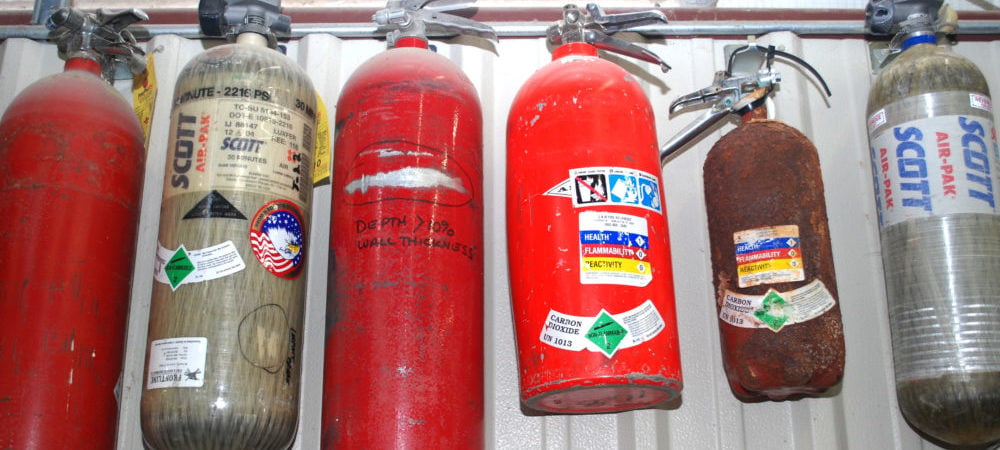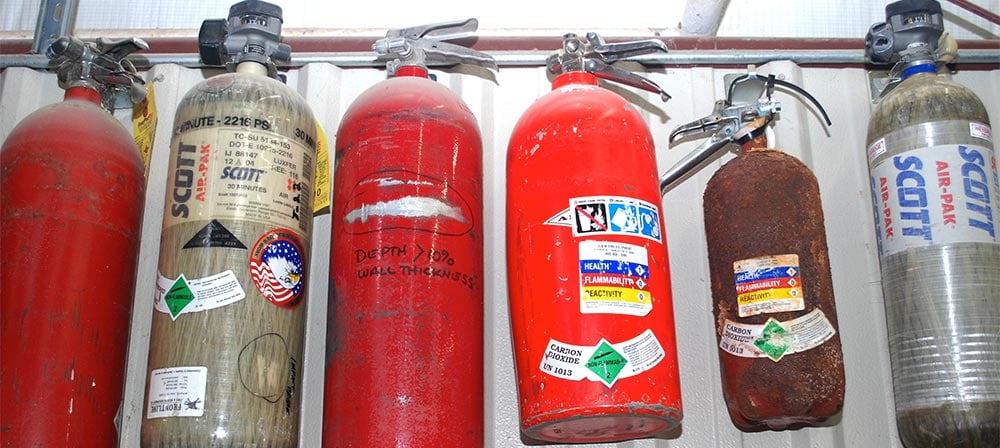Fire extinguishers may be durable, but they don’t last forever. A properly maintained fire extinguisher has a potential to last up to 20 years or more. But in some cases it is safer and more cost effective to simply replace the unit rather than continue servicing it, especially if it has not been properly maintained over the years or is in marginal condition.
The most reliable way to determine when it's time for fire extinguisher replacement is to have the extinguisher inspected by a fire protection company. That isn’t just a suggestion. It’s a required practice under the National Fire Protection Association and most other life safety codes.
Business owners are required to have their portable fire extinguishers professionally inspected once per year. They are also required to perform internal maintenance every 5,6, or 12 years depending on the equipment type. Homeowners should follow a similar schedule. A fire protection professional will be able to easily recognize the signs that it’s time for a fire extinguisher replacement.
Here are some of the signs that it is time to replace your portable fire extinguishers:
- Damage to the Cylinder: Includes visible signs of physical damage, such as dents, corrosion, or leakage.
- Illegible instructions: If the instructions for operating the extinguisher can no longer be read, the unit needs to be replaced.
- Excessive Damage to the Components: Includes broken or loose handles, damaged hoses, etc.
- Rust or Corrosion: A humid or corrosive environment can lead to rust, which in turn can cause important components to break, become inoperable, or worse lead to serious safety issues such as cylinder rupture.
- Fails Hydrostatic Test: If your fire extinguisher fails a hydrostatic test performed by a fire protection professional, the unit will need to be condemned. Hydrostatic testing measures the integrity of the fire extinguisher’s cylinder, which is under constant pressure.
- Age: Over time, a fire extinguisher can become obsolete. If you know or suspect that your fire extinguisher is old and you’re not sure when it was last inspected, have a fire protection professional take a look. Some examples of obsolete types of fire extinguishers are: chemically activated extinguisher such as soda acid or foam types, all stored pressure dry chemical extinguishers manufactured prior to 1984, all extinguishers having manufacturer’s that are no longer in business and for which there are no service parts, and all non-refillable extinguisher that are more than 12 years old.
- Hazard Change: Fire extinguishers protect specific hazards. Over time these hazards may change, requiring a reevaluation of protection and the replacement of current fire protection equipment. The replacement should be an extinguisher which is appropriate for the new hazard potential.
Even the most well-maintained fire extinguishers will deteriorate to an unsafe condition and reach the end of their lives eventually. Here is the Impact Fire “Wall of Shame,” a collection of some of the most badly damaged or inoperable extinguishers and cylinders we’ve seen. Rest assured that we condemned these units immediately.









